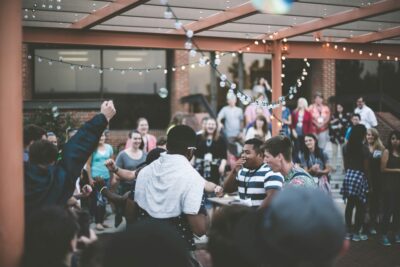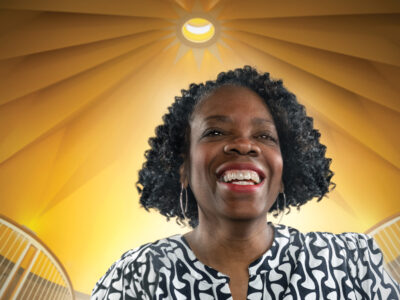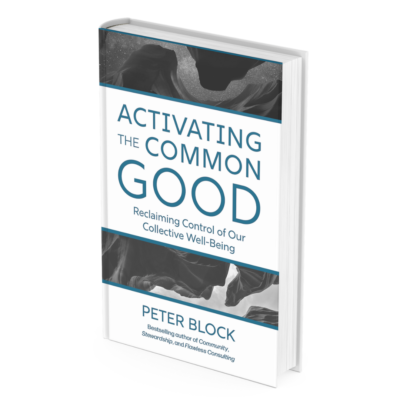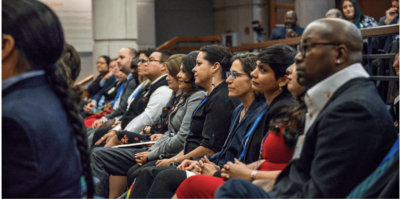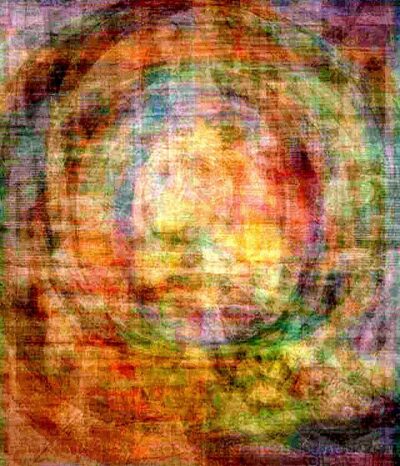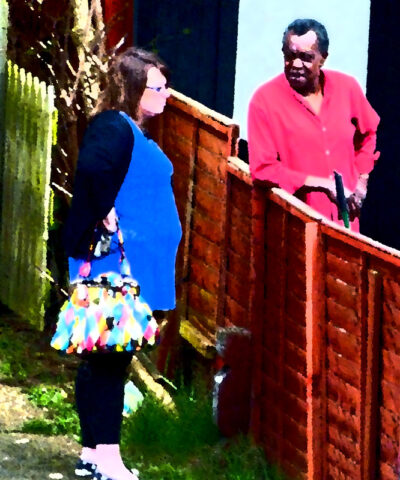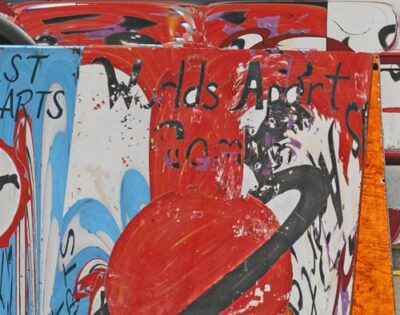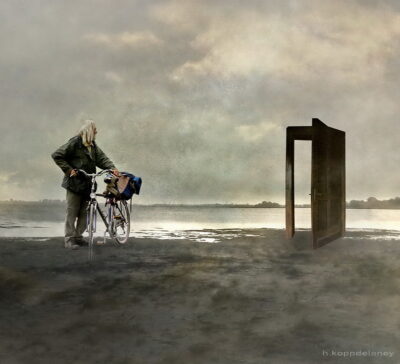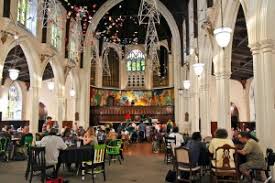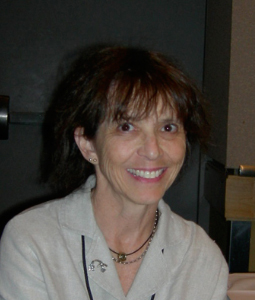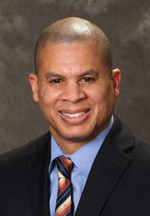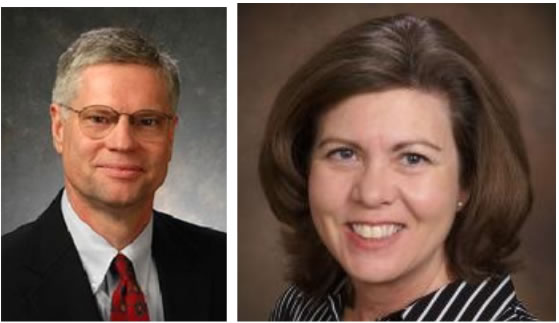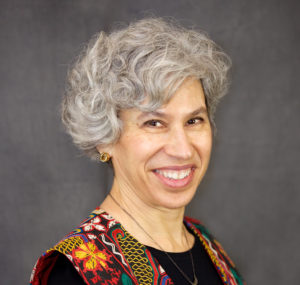Category Archives: Activating the Common Good
Leader As Convener
Witness the Common Good: Transformation Within Reach
Shifting the Conversation from Problem to Possibilities
Activating the Common Good: Reclaiming Control of Our Collective Well-being
Leaders as conveners: lessons from author Peter Block
The Neighborhood Is the Center
Journalism with Community at the Center
Intentional Neighborhoods in Co-Housing
Building Wealth for All through Dividend Housing
Departing the Consumer Culture
Organizing the Unorganizables
A Place at the Table
How Community Action Shapes Health
Visions of a Just Economy
Heart Surgeon Leads the Way
Quick Summary:
Doctors Paul Uhlig and Ellen Raboin talk about the flaws in our current healthcare system: mainly how the practice of medicine does not do enough to build community for patients in hospitals. They talk about Relational Infrastructure.
For ten years following the 2010 publication of their book The Abundant Community: Awakening the Power of Families and Neighborhoods, John and Peter hosted conversations with neighborhood activists on their community-building work. All their ideas are still at work and continue to be influential for anyone engaged in creating the future in the present. The transcript here has been edited for length and clarity.
Full Transcript:
Heart Surgeon Leads the Way Toward Collaborative Health Care
Conversation with Paul Uhlig, MD, and W. Ellen Raboin
February 11, 2014
Peter Block: Here’s the context of why I am excited about what Paul and Ellen are doing. There is great conversation in this world about health care reform and if you look at most of it, it is really about better disease management, better health care management. Mostly about how to automate the process, how to lower the costs, increase speed, and make it more convenient. And to me that’s not really reform, and I thought it was until I met Paul several years ago.
What Paul represents is to me the real reform. which is to change my relationship with my own health and with the health care professional. What’s exciting about what Paul and Ellen have done is that they have invited us to change the relationship we have with our own health and the people around us and treat health as social phenomenon, not a medical problem to be solved.
So, I’m excited, Paul, and I don’t quite know how you would like to begin. You both have written a book. Maybe you could give us a little introduction about what’s exciting to you now about what you are in the process of writing about and creating.
Paul Uhlig: Let me begin by thanking you and John and Maggie and Leslie and the listening audience for the privilege of having the two of us with you today. I’ve long been an admirer of your work. The audience may or may not know, but you and I had an opportunity to cross paths in Cincinnati several years ago, and we worked side by side a little in health care. It was a tremendous experience and I’m so grateful for continued friendship. Ellen and I bring complementary perspectives and maybe I will let her begin from this point. Ellen, I could I pass on to you?
Ellen Raboin: Yes, and again thank you for having us here.
I met Paul in a cultural workshop after he had done some wonderful things in a hospital I’m in where the culture had chewed him up and spit him out. What he was talking about was building community in the hospital and what that means. I like the way Peter put it that this as a social phenomenon that was going on. That was ten years ago and we never stopped talking and thinking about how we build a healing environment where people can relate in new ways. It turns out that relating in new ways is the way that you create new ways of relating. It’s been an adventure. Paul?
Paul: The work that we are focusing on is in hospitals and I say right from the very beginning that the interaction in a hospital is only a very small part of where health is created as we live and work together. That’s true for health in general and it is also true for the way that we respond and recover and heal from an episode of illness. Yet, an entire lifetime can be lived in those few days of a hospital stay for someone who is seriously ill and for their families and the people who are working together to care for them.
What’s very interesting to me and, framing a little bit of our book, is a transformation that’s occurring that is not limited only to health care. It’s a much deeper transformation in society. I certainly have been a party to that in the years of my career in health care. We all know every day that conversations are happening in our country about health reform, and I don’t really have a lot of deep passion about that one way or another. Whether we are Democrat or Republican or what we think of health care reform, legislation is smaller on my list of concerns.
Just step back a little and look at some very broad changes that are happening in health care. I’m a physician and I’m trained very well to do the things that I do, so it’s interesting to step back and look at that training and the work that the physicians, the nurses, social workers, pharmacists, and all the health professions do and how we are trained.
There’s basically a model that we work under that tends to abstract the person away, to focus on the disease, to focus on the scientific treatment of that; that’s wonderful and I don’t want to take anything away from that. But along the way as that model has been applied, for decades now, some things, some really important things have become off-center or lost. It’s interesting to just to reflect about some of the trajectory of this way of working in health care.
When we step back and look at health care we see a huge part of our society, with some of the very finest people that society has, who are very well trained, who are very responsible and working very hard every day across the country and the world. Yet, when we step back and see the results of that in terms of costs that are growing at an unsustainable rate, quality that is surprisingly uneven and not what we would wish it to be, people that really cannot open doors to heath care in a way that all of us wish that we could. The experiences of giving and receiving care is something that should be one of the most extraordinary of human interactions yet they are often leaving people feeling alienated, exhausted, discouraged, scared instead of restored anew.
So, my journey began by trying to understand how can it be that such good people work so hard and produce such less than optimum results for society? As I began to understand this, it was really fascinating to learn the history of these models that we work in. They have a birth date in the late 1800’s and a place of birth: John Hopkins Medical School, which was founded in 1893, and where there was a small core faculty of radical and revolutionary pioneers who became together at that time and basically broached this model of care.
There was another powerful event in history, which occurred in 1910, when Abraham Flexner, who studied the state of education and practice in the United States in health care wrote a scathing report in which he said there is so much that needs to be done, but there is this model, this Hopkins model, that prevents us from doing it.
It was a crystallization, not only in the United States, but also across the entire world, around these ways of working. The ways the hospitals are organized. The way the practitioners do their work. The underlying thought processes used, and the resources that are used, in trying to help people in times of need. We had 50 or 75 years of amazing benefits from that and my specialty is one of those, cardiothoracic surgery, which did not exist at that time, and there are so many things that can be done for people. Yet, increasingly those ways of working are no longer bringing us benefits and we have outgrown these methods. We have extended capabilities and have begun to fractalize what we do so much that the human core process is often lost and with that tremendous opportunities have arisen for trying to do things right.
So, our work is really about pathways to a new future. I’m increasingly certain that we are at a fascinating time in health care. A once in a hundred or a hundred-and twenty-year moment where a paradigm is being completely rewritten. One of those early pioneers, so long ago, was a very revered figure in health care and his name is William Osler. He gave a commencement address in about 1916 to a medical school class. It was called to my attention by a person I admire very much, a man named Brent James, who is a real pioneer in transforming health care practice in the Salt Lake City area. He found this talk and it is incredible.
Osler begins by saying, Congratulations. This is such a milestone in your life. You are about to go into your practice and you are going to do extraordinary things and you are going to have wonderful lives. And then he paused and said, But you know I actually feel sorry for you because you will never be able to experience the unbelievable thrills, the highs, the lows of creating a new way of working in health care as we did. And this transformation had nearly finished by the time that he gave this talk. And it was so poignant because for decades after that he would have had to give that same talk, but not today. Today he would probably be there with his bright eyes and say it’s come back again. It falls to your generation to create this new world of health care.
And that’s what I really feel at this moment. Now, like all true innovations, what this future is going to be is something we do not fully see yet. It’s pathways that we can see. Now what I was going to say is these pathways are true collaborative practices and active engagements of patients and physicians.
Peter: Could you make it more concrete for us and give us some examples of the transformation?
Paul: Let’s think about my friend Mary. Mary is a nursing educator and she is a maternal child nurse. About 13 years ago her mother and father were in a terrible car accident. They were going out to dinner with another couple and another driver collided with them head on. The two friends of the family were killed at the scene. Mary’s mother was very seriously injured with a head injury. Her father, who was the least healthy, she said, was the least injured. Over the next 30 days, Mary and her family helped care for her mother in what proved to be the last month of her mother’s life. The challenges that she encountered began when she first came to the hospital. Her parents’ pastor notified her that an accident had happened and she was there at the emergency room as a nurse and as a daughter and could not be allowed into the room to see her mother because they had not positively identified her mother even though Mary said, That is my mother. It took a phone call to the sheriff to release the names to even allow her to go in.
Over the next month her mother was transferred five different times. Mary spoke to multiple people who were trying very hard, working very well, trying to care for her mother, and yet, she said with each transfer a little a bit of her mother’s history was lost. She said if she had not been there, the ability to communicate and to connect between what one group thought and what another group thought, or even from one shift to another shift, was completely missing. Eventually her mother died. Probably her mother would have died anyway, but Mary was just grieving over the fractalized care that she had experienced and the way the entire thing took place.
Mary also talked about her father. She said her father was an older man in a wheelchair and a niece brought him 50 miles each day to spend time with her mother. When health care practitioners would come in they would ignore him, and they wouldn’t speak with him and she said the language went up a notch, because she was a nurse. She said Please, don’t ever forget that this person is here.
These are often, sadly, the realities that people experience in health care in hospitals. There is wonderful intent and so many people working so well and yet often there is this disconnectedness. Sometimes people say, Don’t you people talk to each other? So, we set out to figure out how we could do better. How could we do an even better job of doing this? And it turned out to be the simplest things. Simply trying to bring people together and to use ordinary language and to sit down and try to change these traditional hierarchies so that the strengths of the patients and families are woven into the care that we are giving.
As we began working in these ways, things started to change. Outcomes started to improve. Patient satisfaction started to change. Our sense of meaning and fulfillment started to change. Also, the context that we were creating became sort of alien in the hospital system and that created interesting challenges as well. Eventually several of these various successful models that we created did not survive in their organizational context. And so, what Ellen and I have been working on for the last ten years is an explication of what is really happening. We call them “Implantation Field Guides” for people who wish to follow on this journey and make their own contributions.
There are some concepts that we have been able to develop and apply that I think might have some meaning outside of health care as well. I’m concerned that I’m talking too much so I’m just going to be quiet and listen here for a minute.
Peter: Thanks, for making it concrete. Ellen, would you like to add something that would help us get more of the texture, like what it looks like?
Ellen: I think these pathways are a good way to think about that. That we are not specific to health care, but we are as a universe moving from the ideas of having experts to the ideas of doing things in a collective and collaborative ways.
The health care environment itself has been organized around individual providers and so that accounts for the power and respect we give to that way of organizing the work. It’s moving now to involving the patient and the family, and this is not a new discourse in our society. We want that for our family, we want that to organize around them, and furthermore to organize around what we are focusing on, which is organizing around meaning. When you start doing that and you start putting people in the same room together, and you ask each other what matters to you, you have a whole different context.
So, what we are talking about here is building what we are calling the social field that is full and rich with resources that enables us to do things that you can’t do when you are organized in a different way. So you can ask each other, How can we get this guy to his sister’s wedding? We know he is going to die and he is going to be dead in a month, but what he wants is to get to his sister’s wedding before that happens. So how can we do that? That way of thinking about what care is, and what health is, puts you on a different agenda as you are together.
So, what we are looking at is reflectiveness between the patterns of interaction that don’t naturally happen in a hospital, and we can build that intentionally. For those of you on the call, we have to figure out who you are. You know that the meetings happen by professionals or not at all. What would happen if we put different people in a room together?
Peter: What would I see?
Ellen: Right now, some possibilities are that when you walk in you see a conference room down at the end of the hall where a group of people are talking about the patient. You take that group of people and put them in the patient’s room with the family, where they are talking with the patient and with the family. Furthermore, you say, What can you tell us about what is important to your father? What can you tell us about what his life is like when he gets home? And can we all get clear about what that means here, today? So, there is that group standing in the hospital room seeing what we can do to change how the care happens and it opens up and makes it possible for us to say things to each other that we didn’t before.
Peter: I would see people standing in a circle in a hospital room, the patient’s room?
Ellen: Yes.
Peter: Who would be in that circle?
Ellen: All the disciplines would be there, because remember the driving question was, Don’t you guys talk to each other?
If you’ve had the experience of being in the bed in a hospital, the nurse comes by and the doctor comes by, and probably the pharmacist never comes by. And the residents come by, so you get a little bit of the story from each one, but who is integrating that? Now, the first thing that happens is for everybody to be there. But the thing that really happens is the emergence of something that wasn’t there before, because of what you can create with all of that context in the room, and all that feeling. It becomes sort of a magical circle. People look at each other and the patient says, All of you care about me, I had no idea that all of these people were caring about me.
There is a fondness that shows up between the patient and the family and then it becomes a healing circle. It’s not about the medicine anymore and it’s not about disease. The shift from the traditional care model, which Paul has pointed out has great benefits. “We have heart in Bed 2” ––patients are talked about that way. And now we can say, We have Mr. James and his wife over here; let’s go visit together and see what we need to do today. It’s about the promises that we made and the promises that we kept to each other. It’s a whole different language that comes with that way of caring for each other.
Paul: One of the interesting things, Peter, is our marker for whether this is working or not is whether there is laughter. It’s spontaneous and it’s kind of leveling, the idea that we are just people together. There’s an interesting term called “Patient Centered Care,” and we began to notice that really the patient wasn’t in the center of the circle, but the patient was a part of the circle. The patient, the family, and all of us are just contributing whatever expertise we can. The patient is contributing their sense of what they really want, the family is contributing, we are contributing different things, and somehow we are providing for each other’s care. And there is this very beautiful thing that takes place. It’s amazing.
Peter: John, do you have thoughts or questions that you might have for the conversation?
John McKnight: One thing I was wondering was whether both of you had examples. Here we are trying to get engaged in the process of the patient and the family and relatives. Can you give us some examples of what their participation and the context of their participation has meant in terms of your ability to do your job. You are listening to people who usually aren’t listened to, and you are a person of some expertise in diagnosis and treatment. What do you learn that you never learned before because they are in the discussion?
Paul: You learn the things that matter. The shift comes toward meaning. One of the patients that I remember is one who said all he wanted to do was to get home to his mule. He had one horse and one mule and that was more important to him than any of my medicine. “Just get me home” is what mattered to this person. Another gentleman raised Black Diamond watermelons and I’d never known what a Black Diamond watermelon was. Another man was an airline pilot and he was interpreting everything that was happening to him through the lens of “am I still going to be able to fly?”
So there is what matters to us in our lives and there is the inconvenience of all this, like this heart attack. And there are probably many different ways to respond, but if you were to create a polarity, one way is to respond to the heart attack and assume that our job is to fix the heart attack and then they can go on about their lives. That is what health care is often like. A different way is to say. What are our true goals here? What is this person finding meaning in and how can we weave the care that we are incorporating together in such a way that it supports the richness of those goals? It’s very different.
Ellen: You are talking about the hearts being broken, but there are also broken hearts. I hear lots of stories from Paul. One recent case was two brothers whose mother was very sick and wasn’t going to make it. The brothers hadn’t spoken in years, and it was broken family. And here you were at this moment, and they knew that it was better for their mother for them to stand together by her bedside and be together. Paul was able to facilitate that as a human being with these brothers who really wanted to relate at the bedside with the mother.
As a society we can ask ourselves why we are dying in the hospital in the first place. There are whole other sets of conversations we could be having today. Why is it still happening and why we are still handing that ritual over to the hospitals? Providers are in that place of really important moments in our social lives when our parents are dying. To be able to be human with each other is a resource we can build together. We say, This makes sense and we can do that here; we should do that and we ought to do that with each other. That’s what we are looking for when we go in. That’s what people think we ought to be doing here with each other. Should we just give them their medicine and leave or is there something else?
Paul: If I could add one other dimension, just as a member of a care team. We have spent a lot of time on the call so far talking about the process of rounds itself and the interactions and the purposes. What we found is when we tried to simply enact rounds in a collaborative way, it almost always did not sustain in the care environment. When we went back to the places where it did work, what we saw, in addition to the rounds, was that in some way another element had arisen in that environment, which was a weekly meeting of the care team, ideally with patient and family present as well, but not for the purpose of caring for the individual patients, but to just simply give us an opportunity to reflect how they were doing together as a team.
A whole lot of our book deals with the importance of creating what we called Relational Infrastructure, and it connects with the idea of action and reflection being coupled together. In health care there is tons of action and there are almost no opportunities for the intact collective team to reflect together about their work as a team and how they can do an even better job. Our implantation model actually centers on creating opportunities for people to simply meet, reflect, and converse.
What we found is that model builds a social field and a capacity that is increasingly rich with what we call resources, contextual resources, that arise in that. We have done this together before and we can draw on that the next time we do it. We remember this family and that way we can respond even more empathetically and wisely with this family. These become resources that we draw upon, but the model is enabled by a particular infrastructure and in health care those things usually don’t exist. So, the implantation model really focuses on how things are created in conversation.
Peter: What’s the argument against it?
Ellen: Part of the relational infrastructure is saying things like we need to schedule the way that we work so that we can all be together. That’s not the way we tend to be organized. Very often, the physicians are not even employed by the hospitals. How can we ever come together? It’s really hard.
Paul: And that’s nice, but we are too busy for that. That would be great.
Ellen: That’s impossible. In a way we ask, Why would we do that? A real surgeon would be in the OR. I mean, why are you out here, on the floor with the family? The nurses do that part. So, we have a divide-and-conquering way of scheduling and organizing and paying and all of the other, and we call this OD 101. The idea is shockingly simple, but hard to implement.
Here’s a really great example. We were just at a teaching hospital where the residents are at the bedside and what they are doing with those rounds is that they are teaching. It’s not that they don’t care, it’s not that they are not giving good care to the patient, but what they are actually doing is teaching. So, when you ask them to move to this way of talking so that the conversation is divided among the people who are in the room, the attending physician says, Now wait a minute; how am I supposed to grade the residents on their knowledge and their ability to report if they are not doing that, if they are not reporting on the bedside? That’s a different accomplishment. It’s a different priority.
So, it’s a very real question. How do you stay in the institutions that are built around creating these magnificent professions that keep us alive more and more? And we want that. We want that society, and we want them to save us, but how do we do that and create these human environments at the same time?
Peter: One more question. What about when they leave the hospital? Any thoughts about what would sustain the healing environment afterward?
Ellen: Yes, I had a wonderful man come to the door the other day selling magazines who has had a really rough life and he is trying to get back on his feet. He learned that I worked with the Ronald McDonald House, which is about putting families at the bedside. He said, Can I bring my son who is five and show him? I want to show him how to take care of people, because he had been in that situation. He knew that his family did not know how to take care of him. He was left with these providers who could not care for him. His mother is on drugs and he does not know how to help her and I want him to learn.
I thought, Oh my gosh, where do we teach our children how to care for each other?
So, I think there are some answers on many different levels. Peter, there is a help desk coming in to help connect to community-based organizations that are standing there wanting to help all of our institutions –– when people come out of prisons, when they come out of hospitals, when they come out of college now. How do we help these people make these transitions? This was so touching to me about this man wanting to teach his son to take care of his mother.
Maggie: The comments in the chat were early in Paul’s discussion. One question was: Is this true for geriatrics community, too? The other one is about how human core is lost. And we do have one caller in the queue.
Peter: I think we may have responded to some of that. There is another comment that says, My client has a group of facilities for senior living, independent, assisted, skilled nursing, and dementia units. What would it be like? Maybe we should take the call and then we can lump these together with Ellen and Paul responding.
Dr. Art Sutherland (caller): I am a retired cardiologist and have been working in population health issues for the last ten years. I understand all about hospitals, but what I want to point out is that basically that’s really extreme care, end of life, extreme trauma, extreme diseases. What you are doing is fantastic in that setting. What I was thinking and hoping to hear, if you are talking about The Abundant Community, is that we really need to focus on the community, because medicine only counts for about 10 to 20 percent of the wellness of the whole country. And if we do the upstream approach in eliminating the social determinism of health and make it better so they are not all negative, then you would do a much better job at prevention and you will keep people from reaching these terrible end stages prematurely.
Paul: Thank you. Did you want start, Ellen, and I will add a few comments.
Ellen: This goes back to what we teach our children. This movement is not, as you say, about the hospital and only about the hospital. In fact, we hope it becomes less so. It is about how we help each other before we get there and after we leave there. So, I’m with you. I think that it was Herb Shephard who said light many fires and get all the people involved and continue who should be in this conversation.
Paul: This is really a poignant and important question that Dr. Sutherland asks. There is a fascinating literature on the so-called Social Determents of Health that shows that what is done in acute health care is a tiny fraction of the determinants of the health of the population. This was actually said about five years ago and it was almost a crisis of faith for me. I’ve been spending my entire life trying to make health care better in a hospital setting and it became increasingly clear to me that where our health is really, truly created, and where the work needs to happen, is in the community. So, it’s like, what am I doing and why am I doing this?
Then it gradually became clear to me that what I had in the hospital setting was an extraordinary laboratory for understanding how to achieve things that could apply in many different settings. The way that we view what we are doing now is that we are basically in that hospital care unit, which we now imagine could be a workplace or a school or any community setting. We were actually creating what we would call an “intentional alternative social field” and we were developing methodologies to generate this richness of resources in this intentionally generated social field that would allow people to almost effortlessly do things that if we tried to do it by individual coordination or hard effort were almost impossible.
So, the simple idea is that there is this thing that is called social field, that is like this living memory bubble of things that people have done together. There are these resources, which are shared experiences, memories, and previous interactions, and these are actually made or socially constructed by people doing things together. If you don’t have a way to meet, connect, and interact, then these things cannot form, and by intentionally creating those things, simply in our case a weekly meeting of the inter-professional team with patients, families that have been cared for before are present so that voice is there as well. There are opportunities for actions and reflections so that you are always moving into action and back to reflection and then back to action and then back to reflection, and that grows and populates the social field with these amazing capabilities.
Peter: One of the questions: Are there any places doing intentional alternative social fields? I want to mention that Edgar Cahn and the TimeBanking idea that has created a structure to build a social field of people exchanging and engaging in an economy of generosity. So, I think there are some structures out there. Edgar’s is called TimeBanking. So, there are some things happening.
Paul: Edgar’s comments and concepts are very exciting. The idea of giving that structure so that things that people want to give and take put great meaning into giving and the idea that people wish to receive and interact and connect. It’s very exciting to me.
Ellen: Someone asked about what the building blocks are, and I would say connection is the word you are hearing over and over here. Structure opportunities where people can connect. Give them that opportunity to pay attention to each other in ways that they have not had before. You know, we are walking through life right now and we can change our pathways so that we are walking in a way that’s more connected and give us moments to stop and reflect. hat can happen in the community and that might be easier than in the hospital. That would be awesome.
John: I might add that there is a neighborhood organizing movement that is increasingly focused on how to weave people together around what they have or what they have to contribute rather than what they want to fix or change. When you see what begins to emerge in those neighborhoods, what you find is a bridge to the kind of in-institution experiment that you have.
Supposing that you knew from a neighborhood around the hospital that there were 16 people who indicated that they would like to do this with people who were older or they would like to provide the following kinds of interactions with people who love horses. So, as we move towards a culture of a contributing, productive, and giving community, it provides the information that people who are in institutions would need and use. This sort of answers Peter’s question: When somebody leaves here, where does this continue and what do you build on? So, connecting that kind of organizing that you are doing has great potential.
Ellen: Who does that connecting? Who is responsible for that? The gap that we saw here in the San Francisco Bay area is that when you get discharged you notice who is standing there. When the doctor that this child is hungry, or thinks I would like to work with the disease, but this child has lead in their apartment. There are community-based organizations that can do something about that, but who makes the connection between the need of the family and the organizations and the people? As you say, the individuals who are standing there and say, I would like to help. Organizing around that is not robust, yet, and we are working on that in different ways.
Peter: Here’s a question that somebody wrote in: Why don’t doctors leave the place, the clinic or hospital, and join the social context of the patient?
Paul: So, it’s a serious question and so ask it again and let me think about it for a minute.
Peter: Why don’t doctors leave the clinic or the hospital and join the social context of the patient?
Ellen: I will tell stories about Paul where he has done that and he has been scorned by his hospital system for doing it. Legally you can’t go to that guy’s house and see how’s he doing.
Paul: Well, you can, but I was discouraged from doing that in several cases, but I do it and I love that. Yes, it increasingly is that way of working that works. It is going to be harder at first to get doctors to do that, but there are other wonderful other health professionals who live in those worlds and gradually the more that physicians are able to experience that, the better. And that brings up the whole domain of health professional education. It is extraordinary how transforming that is and it is a wonderful question. The more that we can do those things the better we get.
Ellen: Why don’t we stop relying on doctors? Maybe there are other people out there or other professions out there. Why does it only have to be the doctor? We just said we need a whole team here and we need a whole village. So, if we stop asking for a doctor to come and instead ask a different question. How can we create a healing circle that is funded differently or resourced differently? How can we expect the doctors that are in the system to do that? I don’t know if that is the right answer. Maybe we do need them, but I’m just saying that there is more than one way to think about what is happening there.
John: That is how the hospice movement really began before it became medicalized. It was exactly what you are talking about.
Charlie Hathorne (caller): I’m the one that brought the question about senior living. In terms of the strategic work my client is doing, it’s like a culture shift from moving from going to a place to die to going to a place to live. To me that’s a major turning things upside down shift, and it has implications for, in Peter’s word, hospitality, in terms of coming to a place to live.
As I listen to you, it’s the idea now about how we can think about creating senior living places that are a place of community. When I first heard Paul and Ellen talk about ithat n terms of the hospital setting, it is reintroducing existential issues of the community that helps us address, like denial of death and what choices do I have, and meaning and isolation, and all of those things I hear going around the hospital bed or in a hospital room. It seems to be the reintroduction of a human element that maybe we could think about for senior living facilities. It’s just a thought I have, and I would love to hear your reactions to that.
Ellen: I would take “a human element” and say “human spirit.” One of the questions that we ask is, Is the thing that we are suggesting doing here helping the human spirit or hurting the human spirit? I think that is possible no matter where you are standing. I love that expression “building a place of living,” and I can see the possibilities for the connectedness there when it’s alive like that, when that’s what you are feeling.
Peter: We are running near the end. Any final thoughts, Paul or Ellen, you would like to share with us about this call or how it has gone for you?
Ellen: Thank you for being here and we hope we can connect.
Paul: From my perspective, what I know is that I have been changed by these interactions at the bedside of patients in these ways. I know that my colleagues have, and I know that my patients and families have been changed, as well.
About your question, Peter, how does this carry forth from the hospital to the community? I think that at least one way is that it carries forth is that we leave these conversations with a different heart. We see things in new ways. We see possibilities that we didn’t see before. We have a kind of confidence that we actually can participate in our own care. That we can work in different ways and that care doesn’t have to be produced and consumed, but that it can be co-created together. That it is just not about whether an illness is treated, but whether a life, purpose, and wholeness is recognized and shared with others.
So, I think it is that change that takes place as we participate in these things is the thing that carries forward. I am glad for this chance to have yet another conversation. That has been the thing that has been so fascinating for me as a doctor: to see the power of simply talking and a safe place for that to take place. So those would be my reflections right now.
Peter: A great point, Paul. Thank you, Paul and Ellen. Thank you very much and it is nice to hear your voice in what we are doing here. John, any final thought you might have and then we will give it back to Maggie.
John: It does strike me that something that Paul and Ellen are moving toward is that they are redefining what it is to be a professional. I think for many professions across the health and human services world is that we are always cautioned to not become involved with your patient. In Illinois more medical people have lost their licenses for something called “becoming personally involved” with their patient than any other cause. But it is being personal that seems to me is at the heart of what we are hearing here and that contradicts one idea of what a profession is about, and it threatens the idea of the objectivity of the person who is removed from us. So, it is courageous, this redefinition of bringing into the world the personal as a critical factor in healing. It is a wonderful thing that you are doing.
Peter: Also, another thought that I like, Paul, is the way you keep saying that the science and the skill of the physician are very critical. There is nothing in what you are saying that undermines that or wants to substitute for that. I think it is important that these two things, this kind of social field that you are talking about and the immense technical knowledge and skill that you have as a thoracic surgeon, can live together. It’s not having to choose and it’s not a movement from one to other, but trying to deepen and enrich that so we can appreciate. Every time I hear you, Paul, you start by saying what we have done is miraculous from a science and technical point of view, and so thank you for that.




